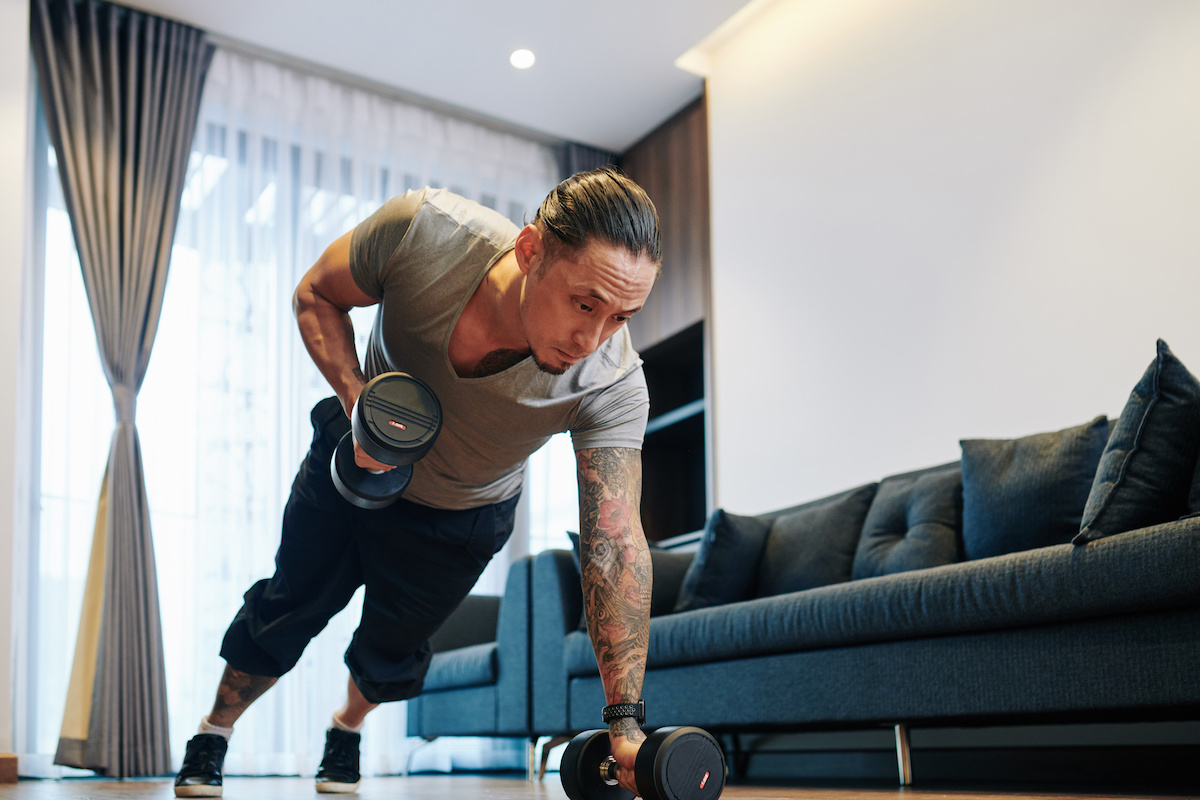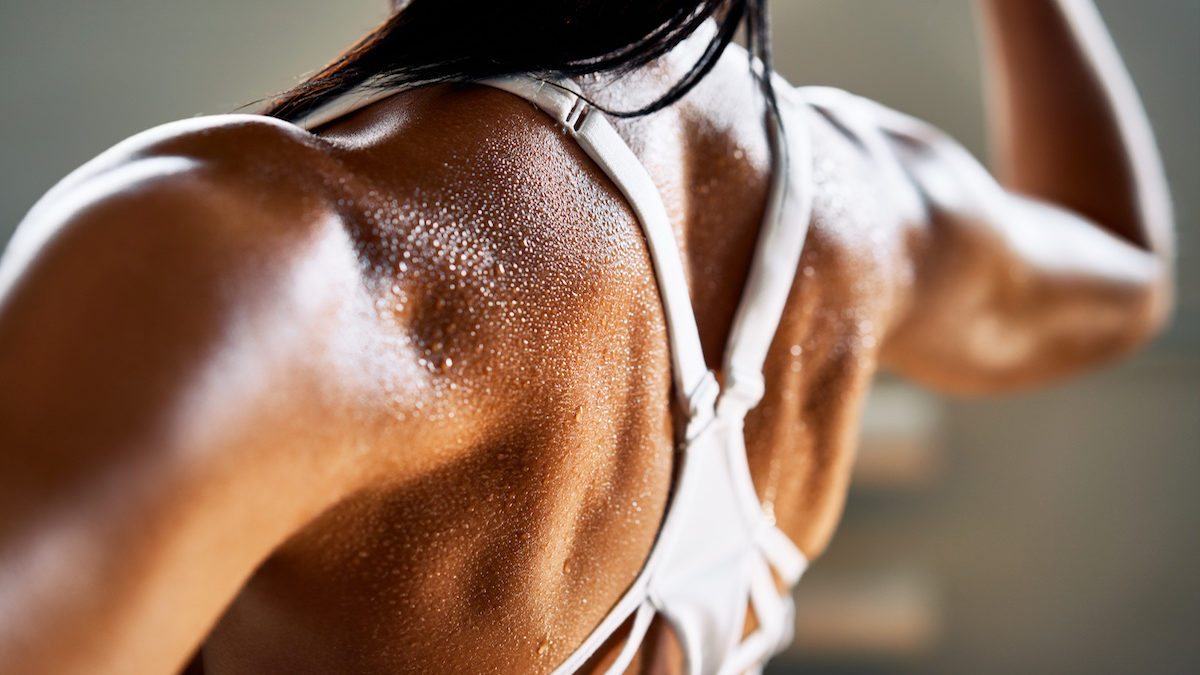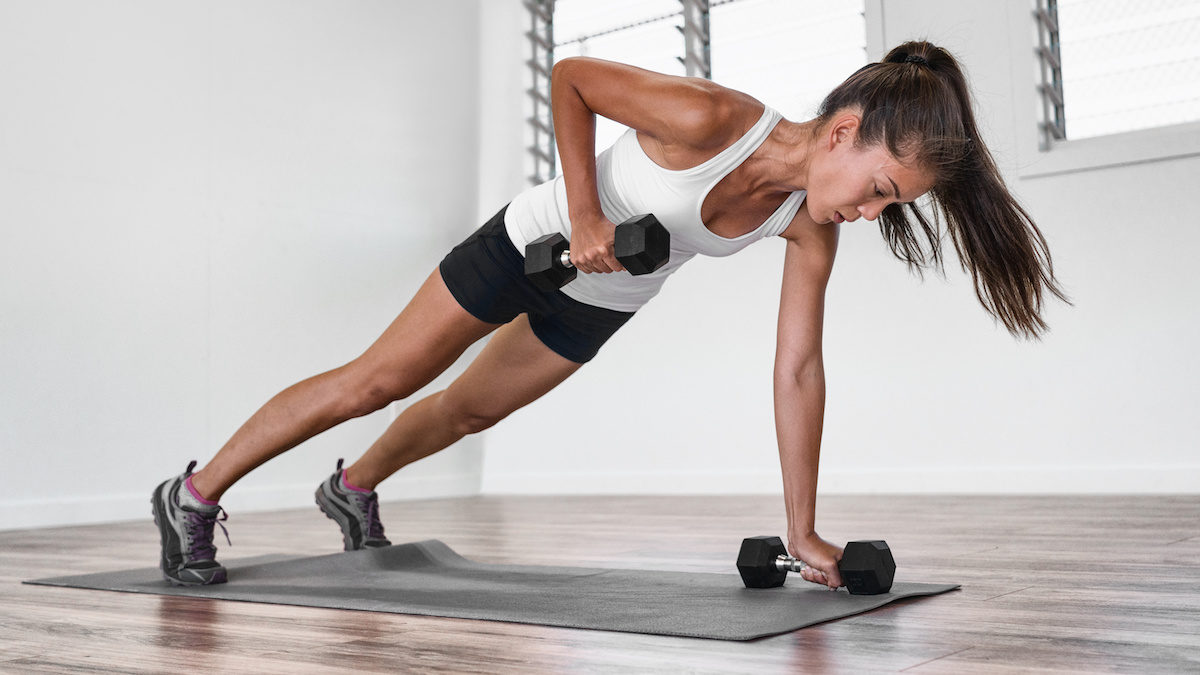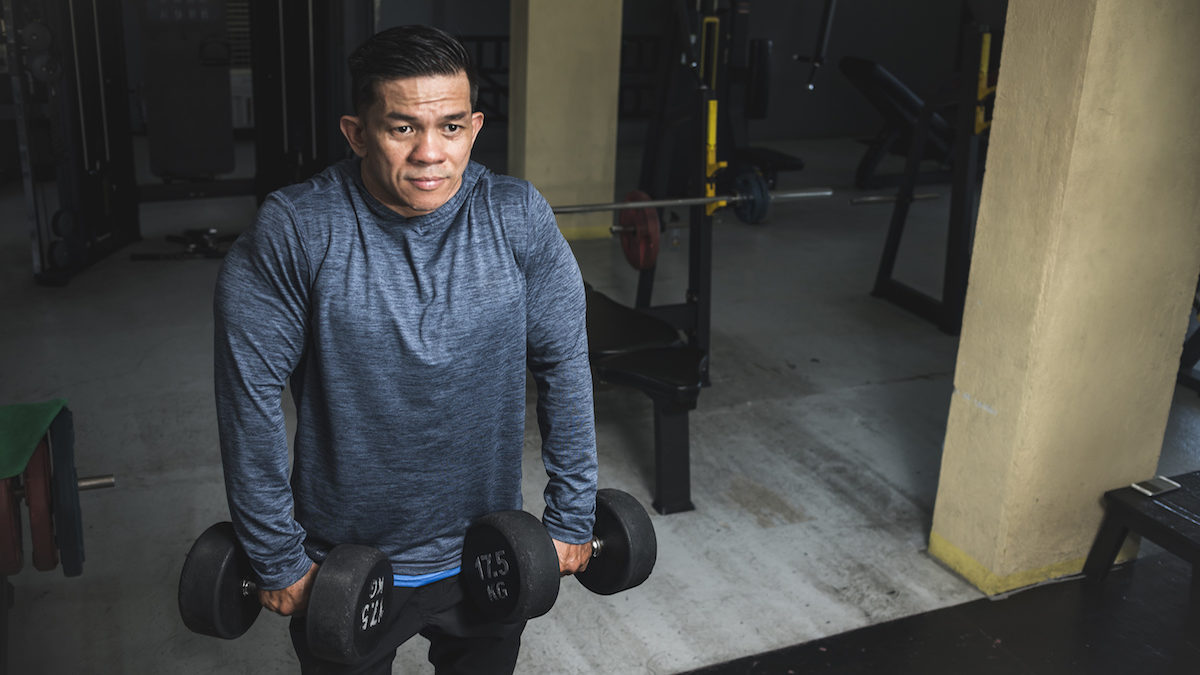6 Simple Dumbbell Exercises To Build And Tone Your Back

There are tons of ways to build a toned and strong back. The pull-up bar has long been a go-to, but outside of the gym and at risk of bringing down your door frame with the at-home versions, they haven’t been the best option recently. Of course, there are also resistance bands that are about as versatile as workout equipment gets, or you might try your hand at the rowing machine or give swimming a go, arguably the best sports for building a hefty wingspan. But in our mind, the finest way to work out your back is to own a pair of dumbbells.
However, unlike the multitude of curls and presses you can easily call on to work out your chest and arms, using dumbbells to build your back can require a little bit more know-how. Here’s personal trainer Shannon Gibbons to get you started with some of the best dumbbell back exercises.
Why You Should Never Skip Back Day
Because it’s not the front i.e. visible when we stand in front of a mirror, we might often give back day the cold shoulder. But, in order to maximise your chest and core strength, you are going to want to regularly focus your attention on your back.
“When exercising, you don’t want to only focus on one area and leave other areas underdeveloped,” says Gibbons. “The body’s parts are all interconnected and work together for optimal health. Leaving some areas weak or underworked can cause compensation causing the other muscle groups to pick up the slack for undeveloped muscles, leading to injury or setback.”
There are several muscles in your back, all of which support the spine and promote good posture (which is often ruined by days sat hunched over our computer). “Having a strong back helps with your form and stability,” says Gibbons. “They connect the major muscle groups and body parts, playing a role in functions and movements.”

The Best Dumbbell Back Exercises
Bent-Over Row
“The bent-over or chest supported row are both great for your posture,” says Gibbons. “A chest-supported row helps isolate the back muscles and protects the lower back.” If you’re at home without a bench, then you may have to go with a bent-over row though. In this case, and as with most dumbbell back exercises, lighter weights and more control are advised.
Technique: While standing take a dumbbell in each hand, hinge forward until your torso is slightly above parallel with the floor, and then drive the elbows behind your body while retracting the shoulder blades. As the elbows pass the midline start to slowly lower them back to the start.
Top Tips: Don’t give in to momentum. Control the dumbbells throughout the entire movement. If you’re rushing, try a lighter weight.
Renegade Row
“Renegade rows engage the entire body being in a plank position,” says Gibbons. Once again, it’s wise not to overestimate your strength here. Too heavy and you’ll unbalance yourself. Flat dumbbells are also preferable, as round ones might roll away.
Technique: Get yourself into a press-up position with a dumbbell in each hand. Keep your body locked as you raise one of the dumbbells, supporting yourself with your other arm. Row the weight upward until your upper arm is slightly higher than your torso, before lowering it back to the ground.
Top Tips: “You want to make sure you are keeping your hips level as you row each arm,” says Gibbons, “and not let them sway too much. Taking a wide stance of the feet helps with that.”

Reverse Fly
“Reverse flys target your rear deltoids as well as the big upper back muscles,” says Gibbons. “This motion in turn helps poor posture.”
Technique: With a dumbbell in each hand, bend forward at your hips until your torso is just above parallel to the floor. Let the dumbbells hang straight down from your shoulders, with your arms slightly bent and palms facing each other.
Keeping your back flat and your torso still, raise your arms straight out to your sides until they’re in line with your body, maintaining the bend in your elbows. Hold the movement at the top before slowly returning to the starting position.
Top Tip: “You want to focus on pulling your shoulder blades together creating scapular retraction,” says Gibbons. This is handy for improving posture and shoulder blade function, and working your upper back.
Shrug
One of the easiest dumbbell back exercises, the shrug is a big booster for your shoulders and upper back. It will also significantly work your traps ie that bit between your neck and your shoulder, which can often be overlooked in various training plans.
Technique: While standing, take each dumbbell on both sides with a neutral grip. Stand up tall and ensure your spine remains neutral. Contract the traps to elevate the shoulders, squeezing hard at the top before slowly lowering the dumbbells back to the starting position.
Top Tip: To enhance the contraction, look slightly up while you are shrugging.

Lat Pullover
From the easiest, to arguably the trickiest dumbbell back exercise, the lat pullover might take you a bit of time to master, but once you unlock that mastery you’ll have one of the most satisfying dumbbell back exercises around under your belt/gym shorts.
Technique: While lying flat across the floor, grasp a dumbbell with both hands and hold it straight over your chest with a bend in your arms. While keeping this bend, lower the weight slowly in an arc behind your head until you feel a stretch on the chest. At this point, bring the dumbbell back to the starting position.
Top Tips: Proper breathing will help you through this one. Remember to inhale then as you lift the weight over your head, and exhale as you come back to the start.
Skull Crushers
The dumbbell skull crusher is best known as a killer triceps move, however, it does effectively work and call in your latissimus dorsi, the largest muscle in your back, to stabilise your arms through the movement.
Technique: Lie down on a flat bench, or the ground. Hold the dumbbells above your chest with your palms facing each other and engage your core. With your elbows fixed, hinge your elbows to slowly bring the dumbbells down just behind your ears, before extending your arms back into the straight position at the top.
Top Tips: Make sure to keep your elbows tucked in, and not flaring out. Doing so lessens the risk of injury to your shoulders and takes tension away from your back and triceps.


















